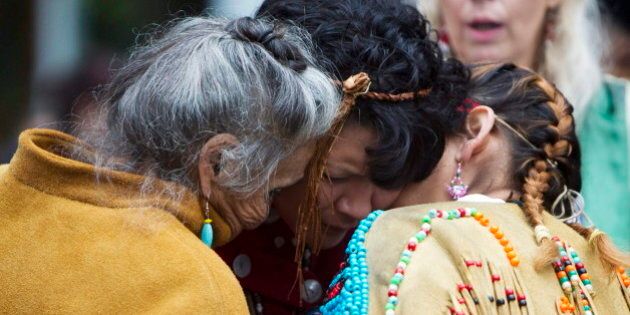
On Monday, the B.C. government of British Columbia will publicly release the highly anticipated final report of the controversial Missing Women Commission of Inquiry. Established in 2010 and headed by Wally Oppal, this inquiry was charged with examining a number of key issues pertaining to the investigation and legal handling of Vancouver's Missing Women cases, and to make recommendations based on these findings.
The proceedings of the inquiry were marred by the exclusion of a number of key witnesses, forced to withdraw because the province refused to provide any financial assistance to those appearing before the inquiry, as well as the resignation of Robyn Gervais, an independent lawyer appointed to represent aboriginal interests at the inquiry.
A coalition of legal groups (Pivot Legal Society, West Coast Leaf, and the B.C. Civil Liberties Association) has released a report condemning the Inquiry as a miscarriage of justice.
While it's tempting to dismiss this report on the basis of the inquiry's many problematic elements, I see this as a critical political moment on at least two counts:
- This report will likely inform the investigation and handling of similar cases in Canada for the foreseeable future.
- This is an opportunity to observe a formal state response to violence against women.
Police often rely on the findings of such inquiries to guide contemporary investigations - indeed, the report of the VPD's internal investigation of the handling of the Missing Women case suggests that the Missing Women investigation relied on the findings of the review into the Paul Bernardo murder investigation, and sought advice from other law enforcement agencies who had handled similar cases involving the deaths and disappearances of prostitutes.
In this way, this final report of the Missing Women Commission of Inquiry is significant because it will likely inform how future investigations are carried out. Importantly, particularly for those of us interested in ending violence against women and girls, this is a critical opportunity to observe the inner workings of a formal state response to this violence, which in turn, better prepares us for engaging the Canadian state on this issue.
There are, however, a number of groups in Canada for whom this report carries particular and pressing significance. Perhaps most prominently, this report will have consequences for those in prostitution. Prostitution is the crux of the Missing Women investigation, with consideration of bias against prostitutes serving as critical component of interrogations of the investigation and handling of this case, including that undertaken by the Missing Women Inquiry. Consequently, the findings of this report are particularly important for those in the sex trade.
This report will also have particular significance for aboriginal women and girls in Canada. While often unacknowledged in mainstream accounts, it is estimated that anywhere from one-third to half of the Missing Women were of aboriginal ancestry. Importantly, the Missing Women case is just one example of the extreme violence experienced by aboriginal women and girls across Canada.
It is estimated, for example, that hundreds, if not thousands, of aboriginal women and girls have gone missing or been murdered across Canada over the last 30 years. Additionally, a number of these cases have involved aboriginal women and girls in prostitution, because aboriginal females are grossly overrepresented in the lowest and most dangerous forms of prostitution in Canada.
Significantly, incidents of violence against aboriginal women and girls have a long and ongoing history of being dismissed on the basis of the perceived and/or actual involvement of the aboriginal women and girls involved. Therefore, this report carries significant weight for aboriginal women and girls.
Over the next week, I intend to blog about the release of the final report of Missing Women Inquiry. I will focus my discussions around these two areas: what are the consequences of this report for those in prostitution, and what are the consequences for aboriginal women and girls.
My discussion will also be guided by two interconnected goals:
- To dismantle dominant systems of oppression (sexism, racism, colonialism, etc.)
- To end violence against women and children.
It is my intent here to offer a social justice perspective on this important moment in Canadian legal history.
